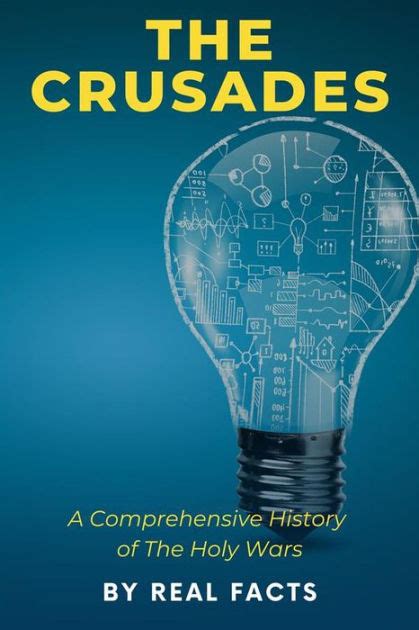Introduction: Unraveling the Definition of the Crusades
The Crusades, a series of religious and military expeditions launched by Western European Christians between the 11th and 13th centuries, are a complex and multifaceted chapter in world history. Defined as armed pilgrimages, the Crusades sought to liberate the Holy Land, particularly Jerusalem, from Muslim control and secure Christian access to pilgrimage sites.

Causes and Catalysts of the Crusades
-
Pope Urban II’s Call to Arms (1095): Triggered by Pope Urban II’s rousing speech at the Council of Clermont, thousands of knights and commoners vowed to participate in a holy war to rescue the Holy Land from Muslim rule.
-
Loss of Christian Foothold in the Middle East: The rise of Muslim powers, such as the Seljuk Turks, had encroached upon Christian territories in the Middle East, including Jerusalem.
-
Economic and Political Motives: The Crusades also served as an outlet for the excess energies of the European aristocracy, promising adventure, wealth, and political advancement.
Phases and Campaigns of the Crusades
The Crusades spanned several major phases, each with its own unique objectives:
### First Crusade (1095-1099):
* Led by Godfrey of Bouillon, the First Crusade established the Kingdom of Jerusalem and other Crusader states in the Eastern Mediterranean.
### Second Crusade (1147-1149):
* Launched in response to the fall of Edessa to Muslim forces, the Second Crusade aimed to reconquer the city but failed in its mission.
### Third Crusade (1189-1192):
* Led by the legendary Richard the Lionheart, the Third Crusade aimed to recapture Jerusalem, which had been lost to Saladin in 1187.
### Fourth Crusade (1202-1204):
* A significant departure from previous Crusades, the Fourth Crusade was diverted to Constantinople, resulting in the sack of the city and the establishment of the Latin Empire of Constantinople.
### Fifth to Ninth Crusades (1217-1291):
* Subsequent Crusades focused on consolidating Crusader holdings in the Middle East but gradually lost momentum and effectiveness.
Impact and Legacy of the Crusades
The Crusades had profound and lasting impacts on both Europe and the Middle East:
### Religious and Ideological Impact:
* Reinforced the power and influence of the Catholic Church.
* Deepened religious divisions between Christians and Muslims.
### Political and Territorial Changes:
* Established Crusader states in the Middle East, which existed for several centuries.
* Reshaped the political landscape of Europe, as monarchs gained authority by embracing the Crusades.
### Economic and Cultural Exchange:
* Fostered trade and cultural exchange between Europe and the Middle East.
* Introduced new technologies, such as windmills and sugar production, to Europe.
Modern Interpretations and Controversies
The historiography of the Crusades has evolved over time, with scholars reassessing the motivations, objectives, and consequences of these religious wars.
### Revisionist Perspectives:
* Challenge traditional interpretations that view the Crusades solely as a Christian holy war by emphasizing political and economic factors.
### Islamophobia and Western-Centric Narratives:
* Critics argue that modern accounts of the Crusades often perpetuate Islamophobic stereotypes and overlook the diversity of Muslim perspectives.
### Reconceptualizing the Crusades:
* Scholars are exploring ways to reconceptualize the Crusades beyond religious conflict, examining their social, economic, and cultural dimensions.
Table 1: Crusades Timeline and Objectives
| Crusade | Dates | Objectives |
|---|---|---|
| First Crusade | 1095-1099 | Liberate Jerusalem and establish the Kingdom of Jerusalem |
| Second Crusade | 1147-1149 | Reconquer Edessa |
| Third Crusade | 1189-1192 | Recapture Jerusalem |
| Fourth Crusade | 1202-1204 | Secure access to the Holy Land and weaken the Byzantine Empire |
| Fifth Crusade | 1217-1221 | Conquer Egypt and weaken Ayyubid power |
| Sixth Crusade | 1228-1229 | Negotiate a peaceful transfer of Jerusalem to Christian control |
| Seventh Crusade | 1248-1254 | Strengthen Crusader states in the Middle East |
| Eighth Crusade | 1270 | Launch a final attempt to recapture Jerusalem |
| Ninth Crusade | 1271-1272 | Edward I of England’s pilgrimage and diplomatic mission to the Middle East |
Table 2: Major Crusader States and Their Leaders
| Crusader State | Founded | Leader |
|---|---|---|
| Kingdom of Jerusalem | 1099 | Godfrey of Bouillon |
| County of Edessa | 1098 | Baldwin of Boulogne |
| Principality of Antioch | 1098 | Bohemond of Taranto |
| County of Tripoli | 1104 | Raymond IV of Toulouse |
| Latin Empire of Constantinople | 1204 | Baldwin I of Constantinople |
Table 3: Impacts of the Crusades on Europe
| Impact | Positive | Negative |
|---|---|---|
| Religious: | Reinforced the authority of the Catholic Church | Deepened religious divisions |
| Political: | Strengthened the power of monarchs | Led to conflicts and political instability |
| Economic: | Fostered trade and commerce | Depleted resources and disrupted economies |
| Cultural: | Introduced new technologies and cultural influences | Spread stereotypes and increased tensions between East and West |
Table 4: Impacts of the Crusades on the Middle East
| Impact | Positive | Negative |
|---|---|---|
| Political: | Weakened the power of the Seljuk Turks | Led to the establishment of Crusader states |
| Economic: | Increased trade and commerce | Depleted resources and disrupted economies |
| Cultural: | Introduced new technologies and cultural influences | Spread stereotypes and increased tensions between East and West |
The Crusades remain a subject of ongoing study and debate, providing valuable insights into the complexities of religious conflict, the interactions between different cultures, and the lasting legacies of historical events.
